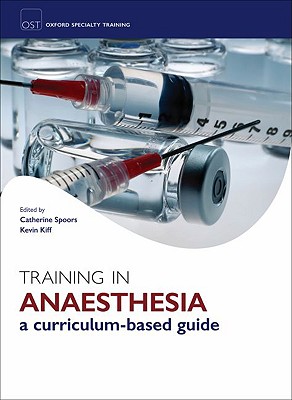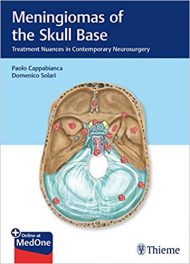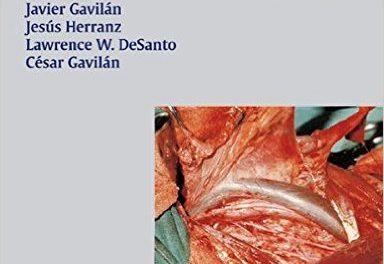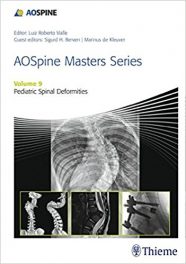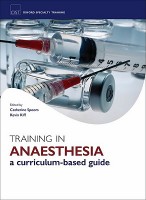 Editors: Catherine Spoors and Kevin Kiff; Series Editor: Matthew D. Gardiner
Editors: Catherine Spoors and Kevin Kiff; Series Editor: Matthew D. Gardiner
Publisher: Oxford University Press – 621 pages
Book Review by Nano Khilnani
Anesthesiology (also spelled as anaesthesiology) is one of the most critically important specialties in medicine. A drug known as an anesthetic is usually administered in vapor form to patients before surgery so they become temporarily unconscious and do not feel pain, or minimally at best, while being operated on. Some drugs are also administered locally through injection to numb specific areas or parts of the body prior to certain procedures.
For trainees in this field, an extensive knowledge of drugs is essential. So is learning to use them in the right ways to help care recipients alleviate their suffering. Knowing about the who, what, when, where and how – so to speak – of anesthesia procedures is also a must to successful outcomes in operating theaters.
This book provides the scientific and practical knowledge that aspiring anesthesiologists need. This volume is part of the Oxford Specialty Training series, in which a collaborative approach is taken, so that the trainers teach what needs to be taught and the trainees learn what they need learn in order to pass exams, gain valuable experience and become successful in their careers.
A very good feature of this text is its detailed contents outlined in five pages, so that the medical student (or physician) can immediately go to the specific topic he or she is seeking information on. Another helpful feature is the acronyms section that follows the detailed contents outline. Here, abbreviations are spelled out. Don’t know what a CRC-BSI is? It stands for catheter-related bloodstream infection.
Here is a basic, helpful overview of the material covered in 25 chapters of this book:
The first five chapters deal with preoperative assessment, the anesthetic room with respect to checks, equipment and induction of anesthesia, the operating theater environment and recover after an operation.
Chapters six through nine cover applied anatomy, the central nervous system with respect to pain, the muscle system, the autonomic nervous system and the cardiovascular system.
The next seven chapters – eleven through seventeen – deal respectively with: body compartments and fluid balance; the renal system; respiration; immunology; hematology; microbiology and infection control; and the gastrointestinal tract and liver.
The last eight chapters – eighteen through twenty-five – discuss homeostasis and endocrine control; obstetric anesthesia, pediatric anesthesia; geriatric anesthesia; care in high dependency units and intensive care units; trauma; statistics for the anesthesiologist; and critical incidents.
An efficient and effective system of organization of material is clearly evident in all the chapters of this book, enabling the student to easily absorb the small chunks of information. This system is more effective in learning, rather than reading large blocks of text, taking notes and reviewing them for exams.
This material organization system includes topics and subtopics sprinkled, so to speak, with boxes, charts, diagrams, color and black-white photos, tables, and other items to make studying a pleasure.
The topics and subtopics within chapters enables the budding anesthesiologist to use this text to study the material within, either in a program of progressive acquisition of information or to use it as a reference on topics he or she did not full absorb or understand the first time it was encountered.
To give an example, let us look at the material found in chapter 2 entitled The anesthetic room: checks and equipment. In this chapter, numerous diagrams and photographs of tools and equipment the anesthesiologist uses in his work are presented. The saying ‘a picture is worth a thousand words’ comes really true here, as words cannot convey as easily what an apparatus or machine looks like, or what it is used for.
In this very useful chapter, the reader sees various pieces of equipment, such as a diagram of an anesthetic machine; a photo of a vacuum-insulated evaporator used to store anesthetic gases; a photo of an Entonox inhalation apparatus, a sketch of a demand valve that regulates the flow of gas; multiple photos of Schrader outlets that provide oxygen, nitrous oxide, air and other items; a photo and an illustration of a Scavenging system that prevents gases from building up within an operating theater and surrounding areas.
Many other items used by anesthesiologists are shown in this chapter for the reader to see and understand their uses: a liquid manometer, a Bourdon gauge, a pressure regulator, and gas flow meters of various kinds. Constant-orifice, differential pressure, inferential, positive displacement, fluidic and ultrasonic flow meters are some of the ones described.
The headings within this chapter are reflective of the clear and detailed organization of material found in all other chapters. To illustrate, some of the headings in chapter 2 are: piped medical gas and vacuum systems; cylinders, pressure regulation and measurement; vaporizers; oxygen delivery systems; breathing systems; ventilators; airway devices; and laryngoscopes.
This book’s editors Catherine Spoors and Kevin Kiff, along with series editor Matthew D. Gardiner have done a great job compiling and organizing the voluminous amount of information and putting out this outstanding book, which was made possible with well-written articles contributed by nearly 40 experts.

